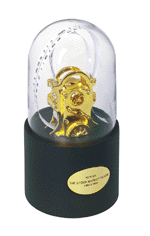Price Cycles - Catch a Trending Market with Charts

This one comes from the KISS school of trading systems - designed for the part-time trader who hasn't time or inclination to constantly monitor the markets and probably is still computer illiterate!
All systems are trend following - it's just that the length of trend may be long or short. My intention was to find a system that catches the long swings, filters out as many go nowhere whipsaws as possible and can be monitored without the use of a computer and with the minimum of time spent studying chart moves.
W.D. Gann inspired the use of swing charts as a filter for indicating trending movements. He used a combination of time frames, the most well known being 3 days, 7 days and his quarterly swing chart. Gann taught that the longer the time frame used, the more reliable the signal given.
My analysis uses a 14-day trend reversal. How do you plot it? Simply mark on some chart paper a vertical line when today's price is higher than it was 14-days ago and keep drawing on up until today's price is below that 14 days ago when you show the line coming down again. What could be simpler?
How then is a swing chart used? First, it gives a broad indication that the trend could continue in the direction of the current swing. Support and resistance areas are clearly shown and once the swing passes previous swing highs or lows greater weight is given, Gann teaching that new highs should be bought and new lows sold.
However, as with all long term trend following systems - first pick a market with prolonged trending action. The British Pound is my current favorite - frequently embarking on long term trends with a minimum of whipsaws.
Using the swing chart to place trades, the system is always in the market. Over three years prior to the 1992 bull, then spectacular bear run, the system has produced 48 trades with an impressive 2:1 win loose ratio. This producing a profit of 29.5 cents or $18,437.5 per contract. However the maximum drawdown was 19.5 cents - more than most would stomach.
By adding a simple rule of setting a maximum stop loss of 2 cents, the maximum drawdown became 8 cents with profitability boosted to 49.5 cents or $30,937.5 per contract. After deducting $100 slippage and commission per trade, this easy to monitor trade system shows how a simple technique can produce impressive profits.
Gann's forecasts of price movements and his ability to multiply money was mind-boggling, not only for traders of that era but by any standard of today. For example, he would predict that a stock that was trading at 145 would go to 164-7/8 but not to 165, and it would do exactly that.
William Delbert Gann - known world-wide as W.D. Gann. Gann is a legend in the world of Stock & Commodity trading. Born June 6,1878 in Lufkin, Texas. W.D. Gann started commodity trading and stockmarket trading in 1902. In 1908 Gann moved to New York City opening his own brokerage firm, W.D.Gann & Co., located at 18th & Broadway. After many decades of incredible trading success, W.D. Gann moved to Miami, Florida where he continued his writings and studies up until his death on June 14, 1955.
W.D. Gann's trading profits are estimated as high as $50,000,000. Keep in mind he traded in the first half of the century. Mr. Gann, in the presence of representatives of a major financial publication, made 286 trades in 25-market days, on both the long and short sides of the market. Of these 286 trades, 264 were profitable! For detailed information on the Gann Course - read now!
